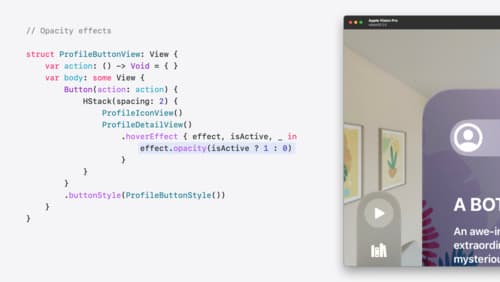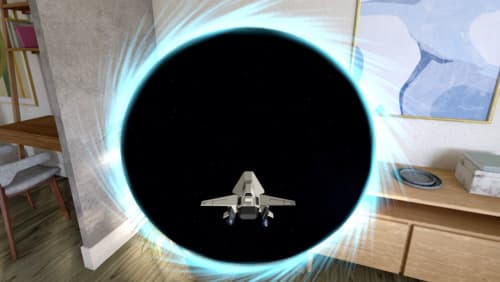how do i add an hover effect to a realitykit entity in reality composer pro?
Asked on 2024-09-26
1 search
To add a hover effect to a RealityKit entity in Reality Composer Pro, you can use the new hover effect APIs introduced in the latest updates. Here's a brief guide on how to achieve this:
-
Use the Hover Effect Component: RealityKit now includes a hover effect component that can be applied to 3D content. You can initialize this component with different styles, such as spotlight or highlight, and customize their appearance.
-
Shader-Based Hover Effects: For more advanced effects, you can use shader-based hover effects. This involves using the hover state node in a shader graph, which provides an intensity value that animates based on the user's gaze. You can connect this to a mixed node to create effects like a sweeping glow along a 3D object.
-
Custom Hover Effects: If you want to create custom hover effects, you can use the new custom hover effect API in VisionOS. This allows you to apply effects to SwiftUI views and RealityKit entities, providing visual feedback when users interact with them.
For more detailed information, you can refer to the sessions from WWDC 2024:
- Create custom hover effects in visionOS (00:59)
- Build a spatial drawing app with RealityKit (09:05)
- Discover RealityKit APIs for iOS, macOS and visionOS (03:01)
These sessions provide insights into how to implement and customize hover effects using the latest APIs.

Create custom hover effects in visionOS
Learn how to develop custom hover effects that update views when people look at them. Find out how to build an expanding button effect that combines opacity, scale, and clip effects. Discover best practices for creating effects that are comfortable and respect people’s accessibility needs.

Explore object tracking for visionOS
Find out how you can use object tracking to turn real-world objects into virtual anchors in your visionOS app. Learn how you can build spatial experiences with object tracking from start to finish. Find out how to create a reference object using machine learning in Create ML and attach content relative to your target object in Reality Composer Pro, RealityKit or ARKit APIs.

Discover RealityKit APIs for iOS, macOS and visionOS
Learn how new cross-platform APIs in RealityKit can help you build immersive apps for iOS, macOS, and visionOS. Check out the new hover effects, lights and shadows, and portal crossing features, and view them in action through real examples.
